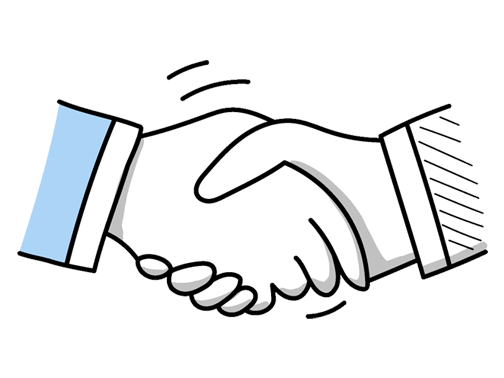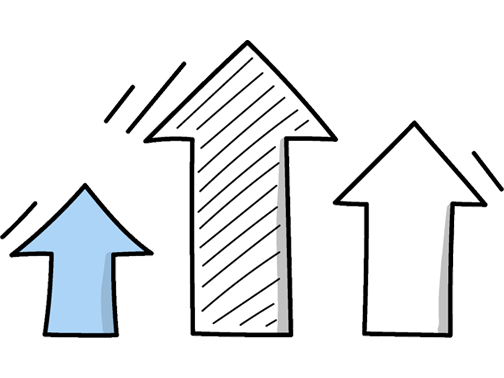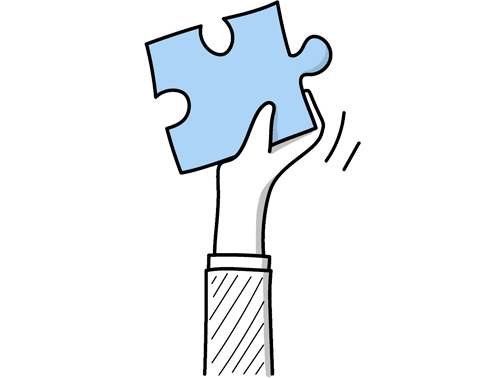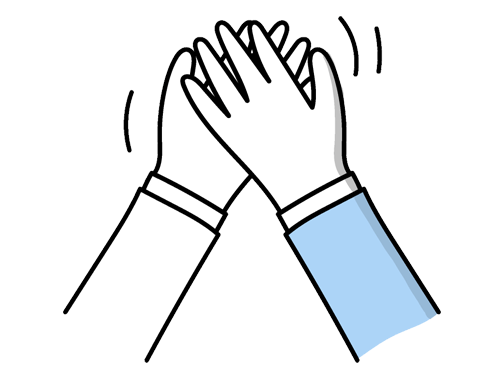Junior Project Manager Interview Questions (2025 Guide)
Find out common Junior Project Manager questions, how to answer, and tips for your next job interview
Practice Interviews Online - Identify your strengths and weakness in a realistic Junior Project Manager mock interview, under 10 minutes
Practice Now »Junior Project Manager Interview Questions
This question helps the interviewer understand your practical experience and how you handle responsibilities throughout a project’s lifecycle. You need to briefly describe a specific project, outlining your role, key steps you took, and the successful outcome.
Example: Sure. In my previous role, I led the rollout of a new booking system for a small events team. I coordinated between vendors, IT, and staff to set realistic deadlines, tracked progress, and handled unexpected issues like last-minute software changes. The project wrapped up on time and improved booking efficiency by 30%, which the team really appreciated. It was a valuable experience managing all parts of the process from planning through delivery.
What they want to understand is how you handle responsibility, coordinate tasks, and lead a team to achieve goals. You need to briefly describe the project, your role in managing it, and the positive outcome your team achieved under your guidance.
Example: In my previous role, I led a small team to launch a local community event. Coordinating between different departments, we set clear goals and timelines, which helped us stay on track. Regular check-ins ensured everyone was aligned, and we adapted quickly when challenges arose. The event attracted over 200 attendees and received positive feedback, showing how effective teamwork and communication can bring a project to life.
Questions like this assess your problem-solving skills and your ability to analyze situations methodically. You need to explain that you gather information, ask why multiple times to dig deeper, and use data or feedback to pinpoint the underlying issue.
Example: When tackling a problem, I start by gathering all the relevant information to understand the full picture. I ask targeted questions to uncover underlying issues rather than surface symptoms. For example, in a previous project, delays were traced back to unclear communication between teams. Once the root cause is clear, it’s easier to develop effective solutions and prevent similar issues from happening again.
Hiring managers ask this question to see how you manage team dynamics and ensure smooth collaboration despite differences. You need to explain that you actively listen to understand each team member’s style and adapt your communication to suit their needs, while promoting open dialogue to resolve conflicts and build consensus.
Example: In any team, I focus on really listening to how people prefer to work and communicating clearly to bridge those differences. When I notice clashing styles, I try to find common ground—like balancing detailed planners with more flexible thinkers—so everyone feels valued. I’ve found that encouraging open conversations helps prevent misunderstandings and keeps the team moving forward smoothly, even when personalities don’t naturally align.
Hiring managers ask this question to assess your problem-solving skills and how you handle challenges under pressure. You need to clearly describe the problem, explain the steps you took to resolve it logically, and share the positive result or lesson learned from the situation.
Example: In a previous project, a key supplier delayed delivery, risking our timeline. I quickly coordinated with the team to identify alternative vendors and adjusted the schedule to prioritize critical tasks. This kept the project on track and taught me the value of flexibility and proactive communication in managing unexpected challenges effectively.
What they want to understand is your ability to maintain team harmony and resolve issues effectively to keep projects on track. You need to say that you listen actively to all sides, communicate clearly, and work collaboratively to find a solution that benefits the team and the project.
Example: When conflicts arise, I focus on understanding each perspective by listening carefully and encouraging open dialogue. For example, in a previous project, two team members disagreed on deadlines, so I facilitated a meeting where we clarified priorities and found a middle ground. This approach helps maintain trust and keeps the project moving smoothly without letting misunderstandings fester.
Interviewers ask this question to see how you ensure transparency and keep everyone aligned on project goals. You need to say that you use regular meetings and tailored reports to share updates clearly, while encouraging questions to maintain engagement and gather feedback.
Example: To keep the team updated, I use regular check-ins and concise email summaries, adapting the detail level depending on whether I’m speaking to developers or stakeholders. I also encourage open dialogue during meetings to gather feedback and address concerns early. For example, in my last project, quick daily stand-ups helped us catch issues promptly and kept everyone on the same page without overwhelming their schedules.
Employers ask this question to see if you can manage time effectively and keep a project on track under pressure. In your answer, explain that you assess task urgency and impact, then focus on high-priority items while communicating clearly with your team to stay organized.
Example: When facing tight deadlines, I start by identifying the most critical tasks that directly impact the project’s progress. I break down the work into manageable steps and communicate clearly with the team to ensure everyone knows the priorities. For example, in a previous role, focusing on key deliverables first helped us meet our deadline without compromising quality. Staying flexible and regularly reviewing progress keeps everything on track.
What they want to know is how you create a positive team environment that encourages open communication, trust, and clear goals to achieve project success. You need to say you promote regular meetings for updates, recognize individual contributions to build respect, and clearly define roles to align and motivate the team.
Example: I encourage open dialogue by regularly checking in and making sure everyone’s voice is heard, which helps build trust. I also focus on setting clear, shared goals to keep the team aligned and motivated. In a previous project, this approach helped us overcome challenges smoothly, as team members felt valued and were eager to contribute towards common objectives.
What they want to understand is how you make sure everyone on the team receives and processes information clearly to avoid misunderstandings. You need to say that you actively listen and paraphrase to confirm understanding, adapt your communication style for different team members, and use regular check-ins like daily stand-ups to keep everyone aligned.
Example: To make sure everyone’s on the same page, I pay close attention to what each team member is saying and ask questions when something isn’t clear. I also adjust how I communicate depending on who I’m talking to – some prefer detailed updates, others want the key points. Checking in regularly, whether in meetings or quick chats, helps catch any misunderstandings early and keeps the project moving smoothly.
What they want to know is if you are familiar with key project management tools and can effectively use them to organize and oversee projects. You need to mention specific software you have used, describe how you applied it to manage tasks or timelines, and show your willingness and ability to quickly learn new tools.
Example: I’ve worked with tools like Microsoft Project and Trello to organise tasks, set deadlines, and track progress. In a recent internship, I used Asana to coordinate team activities and ensure clear communication. I find these tools really help keep projects on track, and I’m quick to get up to speed with new software as needed, which is vital in managing multiple tasks smoothly.
What they want to understand is your practical experience with common project management tools and how effectively you use them to organize work, monitor progress, and support teamwork. You should explain which tools you’ve used, give examples of how you applied them to manage tasks or schedules, and mention how you adapted the software to fit different projects or team needs.
Example: I’ve worked with Trello and Asana to keep tasks organised and monitor progress, especially in team settings where clear communication is key. While I’m familiar with MS Project, I tend to choose tools that fit the project size and team style. For example, in a recent project, using Asana helped us stay aligned and handle shifting priorities smoothly. I’m confident adapting to whatever system best supports the team’s workflow.
This question assesses your ability to handle interpersonal challenges and maintain team harmony, which is crucial for successful project management. You need to explain how you identified the conflict’s root cause, describe the collaborative steps you took to resolve it, and highlight the positive results or lessons learned from the experience.
Example: In a previous team, two members disagreed on task priorities, which was slowing progress. I invited them to a quick chat, encouraging each to share their perspective. We found common ground by realigning tasks with the project goals. This not only eased tensions but improved collaboration, teaching us how open communication can turn disagreements into stronger teamwork.
Employers ask this question to see how you handle challenges creatively and if you can find effective solutions beyond standard methods. In your answer, clearly describe the problem you faced, explain your innovative approach, and share the positive outcome or what you learned from the experience.
Example: In a previous role, we faced delays due to bottlenecks in communication between teams. Instead of relying on traditional meetings, I suggested a shared visual workflow using simple online tools, which helped everyone track progress in real time. This approach reduced misunderstandings, sped up decision-making, and kept the project on schedule. It taught me how small changes in collaboration can have a big impact on outcomes.
Interviewers ask this to see if you can manage unexpected changes without derailing the project. You need to say that you assess how changes affect the timeline and resources, communicate clearly with all stakeholders, and update project documents and plans to keep everything on track.
Example: When the scope shifts, I first look at how it might affect our timeline and resources, then I discuss these impacts openly with the team and stakeholders to keep everyone aligned. I make sure all changes are clearly documented and reflected in our plans, so nothing slips through the cracks. For example, in a recent project, updating the schedule after a new feature was added helped us manage expectations effectively and stay on track.
This interview question aims to assess your familiarity with tools that can help plan, track, and communicate project progress effectively. You need to mention specific software you’ve used, like MS Project, Trello, or Jira, and explain briefly how they helped you manage projects.
Example: I’m comfortable using tools like Microsoft Project and Trello to organise tasks and timelines efficiently. I’ve also used Excel for tracking budgets and analysing data, which helps keep projects on course. Communication platforms like Microsoft Teams or Slack are part of my routine for smooth collaboration. These tools have made managing smaller projects more manageable and helped me stay coordinated with my team throughout.
Questions like this assess your ability to manage diverse communication needs effectively, which is crucial for project success. You need to say that you adapt your communication style to each stakeholder, provide regular updates through appropriate channels, and ensure your messages are clear and concise.
Example: I make it a point to understand each stakeholder’s preferences and adapt how I share updates accordingly, whether that’s quick emails or detailed reports. I keep communication consistent and straightforward to avoid confusion. For example, in a group project, I scheduled brief weekly catch-ups and shared concise summaries, which helped everyone stay aligned and aware of progress without feeling overwhelmed.
Employers ask this question to see if you can make complicated ideas easy to understand and adapt your communication to different audiences. In your answer, explain how you broke down complex concepts into simple terms and adjusted your approach based on the listener’s reactions to ensure they understood.
Example: In a previous role, I explained a technical software update to the marketing team. I started by understanding their perspective, then used simple language and relatable examples to make the changes clear. I encouraged questions along the way, which helped me adjust my explanations. This approach not only kept everyone engaged but also ensured the team felt confident about the update’s impact on their work.
What they want to know is if you actively seek to improve your skills and stay current with tools that can make projects more efficient. You should say that you regularly follow industry resources and use popular project management software to enhance collaboration and project success.
Example: I regularly follow industry blogs and participate in webinars to spot emerging tools. For example, I started exploring Trello and Asana through online tutorials, which helped me manage tasks more efficiently in my last role. I also try to apply new features or software updates at work to see how they can streamline processes, which keeps my approach fresh and practical.
This question checks your ability to choose and use the right technical tools to boost project success. You need to explain how you assess project needs to select suitable tools, describe how you integrate them to enhance team collaboration, and show your adaptability in learning new software when necessary.
Example: When managing projects, I start by identifying the team’s needs and choosing tools that fit those requirements, whether it's Trello for task tracking or Slack for communication. I focus on making sure everyone’s comfortable with the tools by providing guidance and encouraging open feedback. I’m always open to learning new technologies quickly, which helps keep the project running smoothly and the team connected.
Employers ask this question to see how you promote teamwork and ensure everyone participates effectively. You should say you actively communicate by checking in regularly, use inclusive methods like round-robin turns to involve everyone, and create a supportive environment by recognizing contributions.
Example: To keep everyone involved, I make a point of checking in regularly and encouraging open dialogue, so each person feels heard. I like to create space where team members can share ideas freely, often through brainstorming sessions or round-robin updates. For example, in my last project, rotating roles helped quieter members step up and contribute more confidently, which really boosted our overall teamwork and results.
Hiring managers ask this question to see if you understand different project management approaches and can apply them appropriately. You need to explain your familiarity with Agile or Waterfall, giving examples of when and how you used each methodology in projects.
Example: In my previous role, I mainly worked with Agile, attending daily stand-ups and helping prioritize tasks in sprints to keep projects on track. I also have experience with Waterfall on more linear projects, where clear stages and deadlines were essential. Being adaptable to either approach helped me support teams effectively and ensure timely delivery, depending on the project's needs and scope.
This interview question gauges your problem-solving and critical thinking skills when handling complex situations with several options. You need to explain that you evaluate each solution based on factors like impact, resources, and risks, then choose the one that best aligns with project goals and stakeholder needs.
Example: When I encounter several ways to solve a problem, I start by weighing the pros and cons of each option, considering factors like impact, resources, and timing. I also seek input from the team to gain different perspectives. For example, in a university project, involving others helped me spot potential issues early and choose a solution everyone could support, making the implementation smoother.
Interviewers ask this question to see how you stay calm under pressure and solve problems effectively while keeping the team informed. You need to explain that you quickly gather information to understand the issue, collaborate with your team to find solutions, and communicate clearly with stakeholders to keep everyone updated.
Example: When unexpected issues come up, I take a moment to understand what’s causing the problem before jumping to solutions. I keep the team involved, sharing clear updates and gathering ideas to tackle the challenge together. In a previous project, when a supplier delay threatened our timeline, we quickly adjusted priorities and found alternative resources, which helped us stay on track without compromising quality.
Interviewers ask this question to see if you can use data effectively to manage projects and make informed decisions. You should explain how you analyze past project data to identify risks and opportunities, adjust plans based on data, and communicate insights clearly to stakeholders using simple reports or visuals.
Example: Data analysis is key to spotting potential challenges and areas where the project can improve. By looking closely at progress metrics, I make decisions grounded in facts rather than assumptions. I also make sure to present these insights clearly to the team and stakeholders, so everyone understands how the project is tracking and where we need to focus next, helping us stay aligned and proactive throughout.
Ace your next Junior Project Manager interview with even more questions and answers
Common Interview Questions To Expect
The interviewer is looking for a candidate to demonstrate their skills, experience, and passion for the role. Answers should highlight relevant qualifications, achievements, and how they align with the company's goals.
Example: You should hire me for this position because I have a strong background in project management, including my certification in PRINCE2. I have successfully led multiple projects to completion on time and within budget. I am passionate about delivering high-quality results and I believe my skills align well with the goals of your company.
Candidates can answer by stating a specific salary range, mentioning their flexibility, or asking about the company's budget. Interviewers are looking for candidates who are realistic, confident, and have done their research on industry standards.
Example: I'm looking for a salary in the range of £25,000 to £30,000, but I'm open to negotiation based on the overall benefits package. I've done some research on industry standards and believe this range is fair for a Junior Project Manager role in the UK. Can you provide any insight into the company's budget for this position?
The interviewer is looking for honesty, professionalism, and a valid reason for leaving the previous job. Possible answers could include seeking career growth, better opportunities, or a change in industry.
Example: I left my last job because I was looking for new challenges and opportunities to grow in my career. I felt like I had reached a plateau in my previous role and wanted to take on more responsibilities. I'm excited about the potential to learn and develop as a Junior Project Manager in a new environment.
The interviewer is looking for insight into your decision-making process, your passion for the new career, and how your previous experience can benefit your new role. Be honest and highlight transferable skills.
Example: I decided to change career paths because I wanted to pursue a role that allowed me to take on more responsibility and lead projects from start to finish. I have always been passionate about project management and I believe my strong organizational skills and ability to problem-solve will be beneficial in this new role. My previous experience in coordinating tasks and managing timelines has prepared me well for the challenges of being a Junior Project Manager.
The interviewer is looking for insight into your personal motivations, values, and work ethic. You can answer by discussing your passion for the industry, desire for growth, or commitment to achieving goals.
Example: What motivates me is my passion for project management and seeing a project come together successfully. I thrive on setting and achieving goals, and I am always looking for opportunities to learn and grow in my career. Ultimately, I am driven by the satisfaction of seeing a project through to completion and making a positive impact.
Company Research Tips
The company's official website is a goldmine of information. Look for details about the company's history, mission, vision, and values. Understand their products, services, and target audience. Check out their 'News' or 'Blog' section to stay updated with their recent activities and achievements. This will help you understand the company's culture and what they value in their employees.
Tip: Pay special attention to the 'About Us' and 'Careers' sections. They often contain information about the company culture and what they look for in employees.
Social media platforms like LinkedIn, Twitter, Facebook, and Instagram can provide insights into the company's culture and values. You can also find information about their recent activities, events, and how they interact with their customers and employees. LinkedIn can provide information about the company's size, location, and employee roles. It can also give you an idea about the company's hierarchy and the team you'll be working with.
Tip: Follow the company on these platforms to stay updated. Look at the comments and reviews to understand how they handle criticism and feedback.
Understanding the company's competitors can give you insights into the industry and the company's position in the market. Look for information about the competitors' products, services, and strategies. This can help you understand the challenges the company is facing and how they are different from their competitors.
Tip: Use tools like Google Alerts to stay updated about the company and its competitors. This can help you come up with ideas on how the company can improve and stand out.
Glassdoor provides reviews from current and former employees about the company. It can give you insights into the company's culture, salary, benefits, and interview process. You can also find information about the company's strengths and weaknesses according to their employees.
Tip: Take the reviews with a grain of salt. They are subjective and can be influenced by the individual's personal experience.
What to wear to an Junior Project Manager interview
- Dark-colored business suit
- White or light-colored dress shirt
- Conservative tie
- Polished dress shoes
- Minimal and professional accessories
- Neat and clean grooming
- Avoid flashy colors or patterns
- Carry a professional bag or briefcase
- Wear subtle perfume or cologne
- Ensure clothes are ironed and fit well





